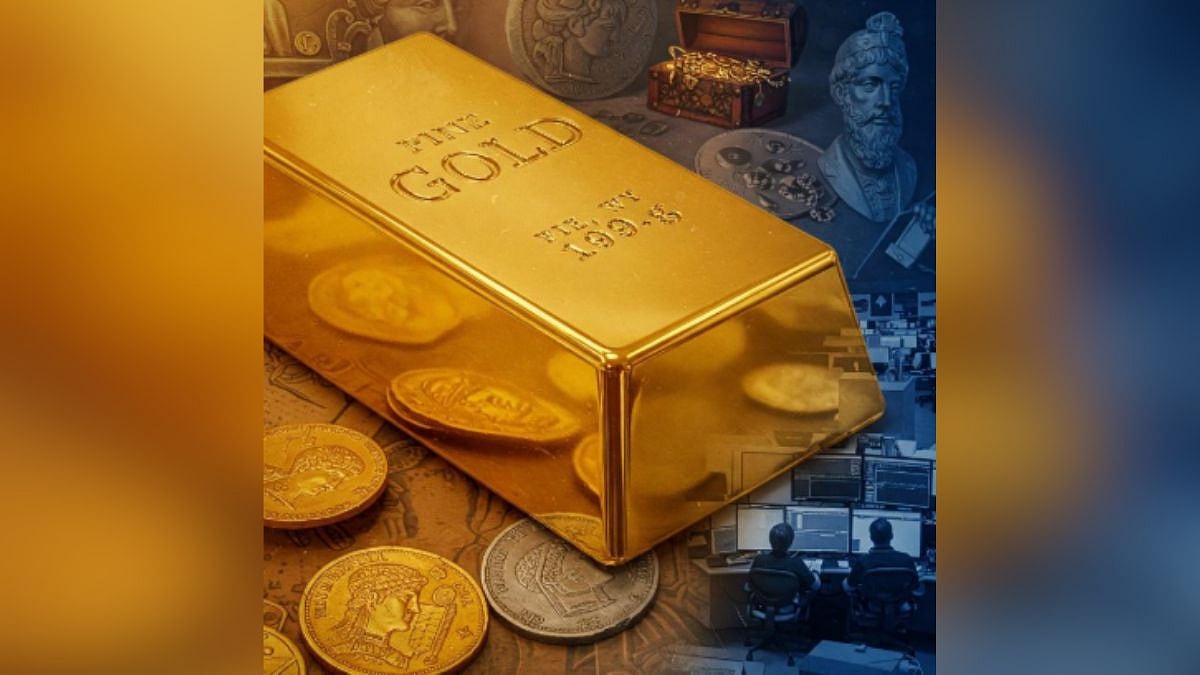Gold and silver have been prized for centuries, not only as symbols of wealth but also as vital components in global economies. Their unique properties and historical significance have made them a popular choice for investors looking to diversify their portfolios or hedge against economic uncertainty. This article will explore how to trade gold and silver, the pros and cons of precious metals trading, and a brief history of trading these metals.
A Brief History of Precious Metals Trading
The history of precious metals Trading dates back thousands of years. Gold was one of the first metals to be used by humans, originating in ancient civilizations such as Egypt, Mesopotamia, and the Indus Valley. It was valued not only for its beauty and rarity but also for its malleability and resistance to tarnish. Gold coins were minted in Lydia (modern-day Turkey) around 600 BC, laying the groundwork for modern currency systems and commodity trading.
Silver also played a significant role in trade. Both metals were used as mediums of exchange and units of account, deeply influencing economic transactions and social hierarchies.
The Middle Ages to the Renaissance
During the Middle Ages, gold and silver continued to serve as integral components of economies across Europe and Asia. Trade routes such as the Silk Road facilitated the exchange of precious metals, and their scarcity led to the establishment of banking systems and the creation of more sophisticated monetary policies.
The Modern Era
The gold standard emerged in the 19th century when countries began pegging their currencies to specific amounts of gold. This system provided more excellent stability to trade and currency values but ultimately fell out of favor during the 20th century due to economic crises and the need for greater monetary flexibility.
Today, gold and silver are traded in numerous markets. They are both seen as safe-haven assets, especially during times of economic instability. Their Trading extends beyond their use as currencies; they are now commodity assets that investors can trade through various financial instruments.
How to Trade Gold and Silver
Trading gold and silver can be approached through several methods, each with its advantages and drawbacks. Here are the most popular ways to trade these precious metals:
Physical Metals
Buying physical gold and silver involves purchasing bullion coins or bars.
Pros:
Tangible Asset: Physical metals can be held and stored, providing a sense of security.
No Counterparty Risk: Owning the asset means that you are not exposed to counterparty risk, such as a financial institution failing.
Cons:
Storage Costs: Safekeeping physical gold and silver requires secure storage, possibly incurring additional costs.
Liquidity Issues: Selling physical metals can be more cumbersome and time-consuming compared to other methods.
Exchange-traded funds (ETFs)
Gold and silver ETFs are investment funds that trade on stock exchanges. They hold physical gold or silver or invest in gold and silver futures contracts.
Pros:
Liquidity: ETFs can be bought and sold like stocks, providing high liquidity.
Ease of Access: Investing in ETFs doesn’t require dealing with the complexities of physical storage.
Cons:
Management Fees: Many ETFs charge management fees, which can reduce returns over time.
Counterparty Risk: Investors are exposed to risks associated with the fund and its management.
Futures Contracts
Futures contracts are legally binding agreements to buy or sell gold or silver at a predetermined price on a specified future date.
Pros:
Leverage: Futures trading allows for significant leverage, enabling traders to control larger positions with smaller amounts of capital.
Hedging Opportunities: Traders can hedge against price fluctuations in the market.
Cons:
High Risk: Leverage can amplify both gains and losses, making futures trading risky.
Complexity: Futures trading requires an understanding of the contracts, margin requirements, and market movements.
Contracts for Difference (CFDs)
CFDs allow traders to speculate on the price movements of gold and silver without actually owning the underlying metals. When trading CFDs, you enter a contract with a broker to pay the difference between the opening and closing price of the asset.
Pros:
Leverage: CFDs enable traders to use leverage, potentially amplifying profits with a smaller initial investment.
Access to Global Markets: CFDs provide access to various global markets without the need for dealing with physical assets.
Cons:
Counterparty Risk: There is a risk that the broker may default, which could lead to losses.
Regulatory Environment: CFDs are subject to regulatory scrutiny in some jurisdictions, and traders should ensure they comply with local regulations.
The Pros and Cons of Trading Precious Metals
Advantages of Trading Precious Metals
Safe-Haven Assets: Gold and silver are often viewed as safe-haven assets during economic downturns or periods of political or financial uncertainty. Investors flock to these metals when other investments may be losing value.
Inflation Hedge: Precious metals are considered a hedge against inflation. When inflation rises, the value of paper currency declines, whereas the price of gold and silver typically increases over time.
Portfolio Diversification: Adding gold and silver can enhance a portfolio’s diversification. Since precious metals often have low or negative correlations with other asset classes, they can help mitigate portfolio risk.
Tangible Value: Precious metals have intrinsic value and can serve as a reliable store of wealth. Unlike other assets that may lose value, gold and silver are historically considered to retain their worth over time.
Global Demand: The demand for gold and silver is driven not only by investment but also by industrial applications and jewelry production, adding further layers of demand that can support prices.
Disadvantages of Trading Precious Metals
High Volatility: Precious metals can be subject to significant price swings due to market sentiment, geopolitical events, and changes in economic conditions. This volatility can present challenges for traders seeking stability.
Storage and Insurance Costs: If investing in physical metals, traders need to consider storage and insurance expenses to protect their investments. These costs can eat into overall profitability.
No Dividend or Interest Income: Unlike stocks and bonds, precious metals do not generate dividend payments or interest. Investors are reliant solely on price appreciation for profit.
Strategies for Trading Gold and Silver
To successfully trade gold and silver, traders should implement robust strategies tailored to their investment goals. Here are some effective strategies to consider:
Technical Analysis
Technical analysis involves studying price charts, patterns, and indicators to forecast future price movements. Traders use various tools, such as moving averages, relative strength index (RSI), and Fibonacci retracement levels, to identify entry and exit points.
Fundamental Analysis
Fundamental analysis evaluates the factors influencing the supply and demand of precious metals, such as global economic conditions, inflation rates, interest rates, and geopolitical events. Keeping abreast of economic news and understanding how it impacts gold and silver can lead to informed trading decisions.
Trend Following
Trend-following strategies focus on identifying existing market trends and Trading in the direction of that trend. For instance, if gold is in a bullish trend, traders might look for long positions, while bearish trends would prompt short selling (or finding ways to leverage declines through ETFs or other instruments).
Long-term Investing
For those interested in a more passive approach, long-term investing in gold and silver can be a viable strategy. Investors may choose to accumulate physical metals or invest in ETFs that track the price of these precious metals, using a buy-and-hold approach to benefit from long-term appreciation.
The Bottom Line
Trading gold and silver presents unique opportunities for investors, combining the potential for profit with the historical significance of these precious metals. Understanding how to trade these assets—whether through physical holdings, ETFs, futures contracts, options, or CFDs—is crucial for tapping into their potential.
While the advantages of trading precious metals, including acting as a safe haven during economic downturns and serving as a hedge against inflation, are substantial, the risks and drawbacks cannot be ignored, such as market volatility, storage costs, and the absence of income generation through dividends.
Successful Trading of gold and silver requires both a keen understanding of market mechanics and the implementation of risk management techniques to navigate the complexities. By employing technical and fundamental analysis, traders can develop robust strategies tailored to their goals.
The historical context of precious metals Trading helps us appreciate their unique role in the global economy and investment landscape. Understanding when, how, and why to trade these metals should guide traders toward making informed decisions that align with their financial objectives and risk tolerance.
In the evolving financial landscape, the relevance of gold and silver persists, making them not just relics of the past but vital components of contemporary investment strategies. Whether you are a novice investor looking to start your journey in precious metals trading or an experienced trader keen on refining your strategy, the fundamentals covered in this article provide a solid foundation for navigating the exciting world of trading gold and silver.
As with any investment, continuous education, market analysis, and adherence to a well-thought-out trading plan will be key to success in precious metals trading. With diligence, patience, and a strategic approach, traders can effectively harness the unique benefits of gold and silver while managing the associated risks.









